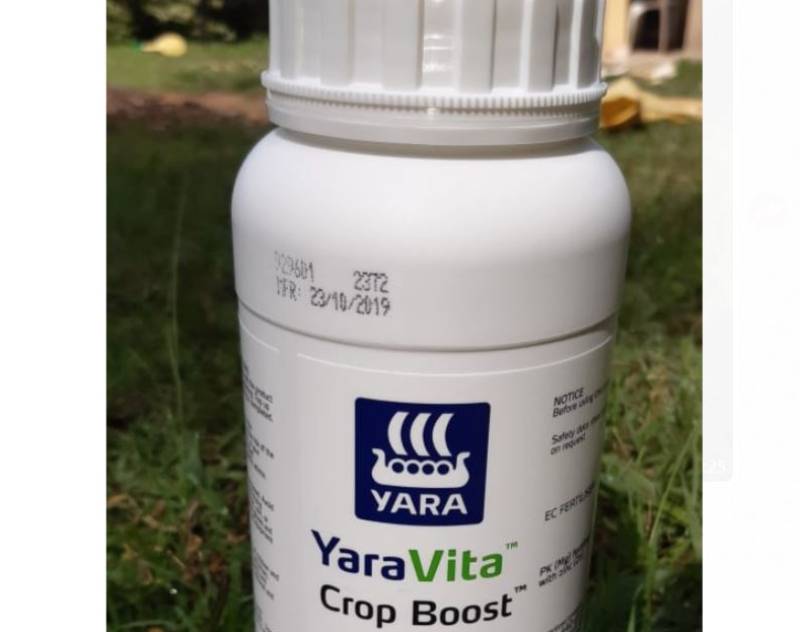Best time to apply foliar fertiliser, increase yields

As rains continue to pound many parts of the country, farmers have been urged to use foliar feeds to maximise crop yields.
Leading fertiliser company Yara East Africa country manager William Ng’eno says foliar feeds are a compliment to ground manure, which is sometimes lost through leaching during rains.
He said climate change had caused unpredictable rain patterns, with some areas receiving more or reduced rains than before, which, he added, had complicated fertiliser application.
“Too much rainfall leads to fertiliser leaching or surface run-off that washes away nutrients. On the other hand, with reduced rains or prolonged droughts, farmers are unable to use dry or ground-applied fertilisers since they need moisture to dissolve and be taken up by plants,” Ng’eno said in an interview.
He, however, advised farmers to use both foliar and ground fertiliser because soils continue to get depleted and they need to be nourished from the two methods of application to ensure optimal crop yields.
“Our fertiliser uptake is generally very low, which explains our low productivity. Farmers in Kenya, on average, apply around 50 kilos of fertiliser per hectare while in Latin America it is 200 kilos of nutrients per hectare,” he noted.
Kenyan farmers harvest a third of maize produced by their Chinese counterparts and a fifth of what US farmers get on the same piece of land, owing to a variety of factors, including over-dependence on rain-fed agriculture, poor seed policies and nonviable land subdivision.
Low fertiliser application has, however, been cited as a huge contributor to poor yields.
Ng’eno estimates that simple recommendations and proper policies, including use of fertiliser, can take maize yields from the current 10 bags per acre to 30 bags. This can be boosted with consistent extension services, he says.
He says good quality foliar feeds should be applied twice in a crop season. “The other important point to note is timely application. Follow manufacturer recommendations, and especially on crop type, stage of crop and rates to be applied is critical to get the best outcome,” he advises.
Ng’eno avers that from extensive soil testing Yara has done across the country, up to 60 per cent of Kenya’s arable land is acidic, with limited phosphorous and micro nutrients.
This, he says, means farmers should apply high phosphorous foliar more than before to realise better crop start and better yields.
“About 90 per cent of the soil in Kenya is also deficient in sulphur. We now need quality fertiliser, which are less acidifying to restore the soil PH, use technologies that protect the soils and ensure organic matter retention and keep it for future generations,” he notes.
He encourages farmers to embrace soil testing “because farming is a science.”
“Knowing your soil will empower you to give the nutrients that will restore its fertility. You will be able to take advantage of the differentiated products in the market that answer to the needs of soils in various regions,” he says.
Ng’eno says the future of agriculture is bright with such unexpected developments like the current Covid-19 pandemic highlighting the importance of food production. Farmers should seize the opportunity, he says.
Want to get latest farming tips and videos?
Join Us
Share this article on social
 The Standard Group Plc is a multi-media organization
with investments in media platforms spanning newspaper print operations,
television, radio broadcasting, digital and online services. The Standard Group
is recognized as a leading multi-media house in Kenya with a key influence in
matters of national and international interest.
The Standard Group Plc is a multi-media organization
with investments in media platforms spanning newspaper print operations,
television, radio broadcasting, digital and online services. The Standard Group
is recognized as a leading multi-media house in Kenya with a key influence in
matters of national and international interest.
 The Standard Group Plc is a multi-media organization
with investments in media platforms spanning newspaper print operations,
television, radio broadcasting, digital and online services. The Standard Group
is recognized as a leading multi-media house in Kenya with a key influence in
matters of national and international interest.
The Standard Group Plc is a multi-media organization
with investments in media platforms spanning newspaper print operations,
television, radio broadcasting, digital and online services. The Standard Group
is recognized as a leading multi-media house in Kenya with a key influence in
matters of national and international interest.







